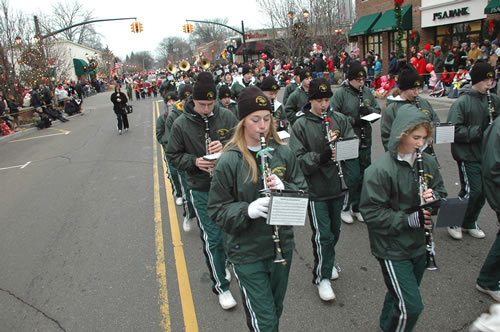
A letter published in the Grosse Pointe News this week asked “are Grosse Pointe taxpayers getting their money’s worth” for our per pupil spend that, as the writer recounted, is higher than the state average. Let’s have a look.
Before we answer the letter writer’s question about “worth”, let’s review how the GPPSS can even spend more than the state average given the limitations of Proposal A.
Averaging all of the state’s 1.4 million K-12 students, the statewide average expenditure per pupil was $12,191 in 2021. In the GPPSS the average was $15,074 per student. The GPPSS spent $2,883 more per pupil than the state average. (See footnotes for more explanations.)
How can the GPPSS spend more? The short answer is simple. Voters asked the GPPSS to do so. Voters authorized the GPPSS to spend more money in three specific ways:
- Since 1994 the GPPSS always received a higher amount of state tax dollars per pupil than the vast majority of Michigan public schools. This is solely a state level decision. In 2021, GPPSS state revenue was $675 per pupil higher than the state average.
- Also since 1994 GP voters have always approved the Hold Harmless Millage. Precious few districts are given this option (by the state) to bring this option to voters. GPPSS voters have always asked the district to levy the Hold Harmless millage. In 2021, the Hold Harmless millage was worth $1,695 per pupil.
- Wayne County voters passed the Wayne County Enhancement Millage a few years ago. Few other Michigan Counties levy this millage. It is worth about $425 per pupil in the GPPSS.
These three unique GPPSS revenue conditions total $2,795 per pupil – similar to the $2,883 higher spend per pupil detailed above.
Now that we know how the GPPSS can spend more than the state average (voters asked the district to do so), let’s see where that money goes.
Schools teach students. Teacher costs are every district’s highest expense. Two factors significantly influence teacher costs: Teacher compensation and the ratio of student to teachers.
In the GPPSS’ in 2021 the average teacher salary was $75,586 compared to the state average of $64,237. With benefits — particularly retirement costs which are set by the state as a percentage of salary cost — the GPPSS average investment per teacher is $127,000.
But even more importantly, the ratio of students to teachers in the GPPSS in 2021 was over 4.5 students lower than the state average. This equates to more class choice options for students (see Note 2), probably lower class sizes, and more teacher time focused on each student.
If the GPPSS had the same ratio of students to teachers as the state average then the GPPSS would employ 20% fewer teachers and teacher investment would be reduced by $2,129 per pupil.
Recalling that the GPPSS’ invests $2,883 more per pupil than the state average, $2,129 (nearly 75%) funds more favorable ratio of students to teachers and better compensation for GPPSS teachers. (See footnotes for the remaining 25%.)
Returning to the question, are GPPSS taxpayers getting their money’s worth? How do we assess value (worth) in public education? Many point to test scores, which has its pros and cons. Some point to college acceptance. Others have less quantifiable measures.
Those questions will be around as long a we have taxpayer funded schools. But there may be a simpler way of determining if GP taxpayers see value in funding higher educational investment per pupil than the state average. Do they continue to do so a they have for the last nearly 30 years?
By this measure the answer is clear. GP voters see the value in doing so.
Notes for further explanation and detail:
Note 1: The letter writer compared GP high school spend versus the statewide average which is apples and oranges since the statewide average includes elementary and middle schools as well. High school students cost more because there is a wider array of classes and services than in middle and elementary schools. Had the writer included average costs of those other levels it would have been clear that middle school costs per students were thousands of dollars less than high school.
Note 2: North’s average was higher than South’s because South has more students and the the state report used by the letter writer applied overhead costs on a building basis rather than across the district. A school with lower attendance therefore would show as a higher cost per pupil.
Note 3: The remaining 25% of the higher GPPSS average compared to the state is mostly Operations and Maintenance costs – mainly because the GPPSS has many more buildings than the vast majority of Michigan schools and with declining enrollment the cost per pupil will increase as a result. To the question of value, I suspect many GPPSS parents would prefer more buildings than less.
Note 4: Other costs per pupil are lower in the GPPSS, particularly Transportation. The GPPSS ha much lower busing costs than most Michigan school districts.